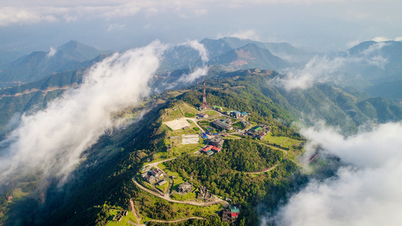This year in India, rainfall, which is crucial for the summer growing of crops such as rice, sugarcane, soybean and corn, is expected to be the lowest in eight years.
 |
| Workers transport rice at a grain wholesale market in Amritsar, India. (Photo: AFP/VNA) |
Unusually dry weather in August this year has severely affected cereal and oilseed crops in Asia.
The strengthening El Nino phenomenon and forecast lower rainfall in September are threatening to further disrupt grain supplies.
This year in India, rainfall, which is crucial for the summer growing of crops such as rice, sugarcane, soybean and corn, is expected to be the lowest in eight years.
Meteorologists and analysts say record low rainfall is expected to reduce production of many crops in India, including rice. The country has imposed export restrictions, sending prices to a 15-year high.
Meanwhile, analysts have lowered their forecasts for Australia's wheat crop for the first time in four years, as more key regions failed to get enough rain in August.
Ole Houe, director of advisory services at agricultural brokerage IKON Commodities, said wheat production was forecast to be 3 million tonnes lower than the firm’s initial estimate of 33 million tonnes. If the dry conditions persist in September, output could fall further, he said.
In addition, low rainfall in Southeast Asia could reduce supplies of palm oil, the world's most widely used vegetable oil, as well as rice, sugarcane and coffee output. Indonesia and Thailand are among the countries most affected.
Chris Hyde, a meteorologist at US-based climate data analytics platform Maxar Technologies, said eastern Indonesia and much of Thailand have had very little rain in the past 30-40 days, with rainfall here at only 50-70% of average.
Rainfall in Indonesia and Thailand is forecast to be below normal for much of September, the expert said.
According to Mr. Hyde, many places in the world are suffering from El Nino and this weather phenomenon will continue to strengthen later this year.
El Nino typically leads to drier weather in Asia, while many parts of North and South America experience excessive rainfall.
Source







































































































Comment (0)